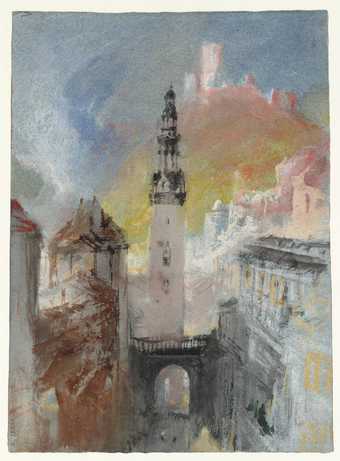
Joseph Mallord William Turner, St Martin’s Church, Cochem c.1839. Tate.
Experiments on Paper
9 rooms in JMW Turner
This room presents a selection of Turner’s work on coloured papers
Turner was always experimenting. He tested new materials, techniques and colours in search of exciting ways to present his ideas. Some of Turner’s earliest drawings are on blue paper. This may have been a conscious decision to align himself with a long tradition of European artists who drew on blue paper.
As a mature artist Turner broke free from tradition and created dazzling effects using vividly coloured paint on papers in a range of hues, including blue, grey, brown and green. He often paired his coloured papers with a quick-drying and opaque paint called gouache (or bodycolour), which is watercolour thickened with white pigment.
Turner was very particular about his paper. He needed papers strong enough to withstand his multi-layered technique, from colour washes to scratching out. His favourite coloured paper was manufactured at a mill near Bath, in the southwest of England.
Made from linen fibres, this paper was finished with a gelatin size, a top coating that gave it extra strength. Aimed specifically at artists, it made use of the latest paper-making technology. As well as taking supplies of his favourite paper on sketching tours, Turner also sampled new materials abroad. He bought some dark blue paper in a valley near the Mosel River, Germany, and some brown paper in Venice that he used as the basis for a series of ethereal nocturnal city views.
This display is indebted to the research of art historian Dr Cecilia Powell and paper historian Peter Bower.
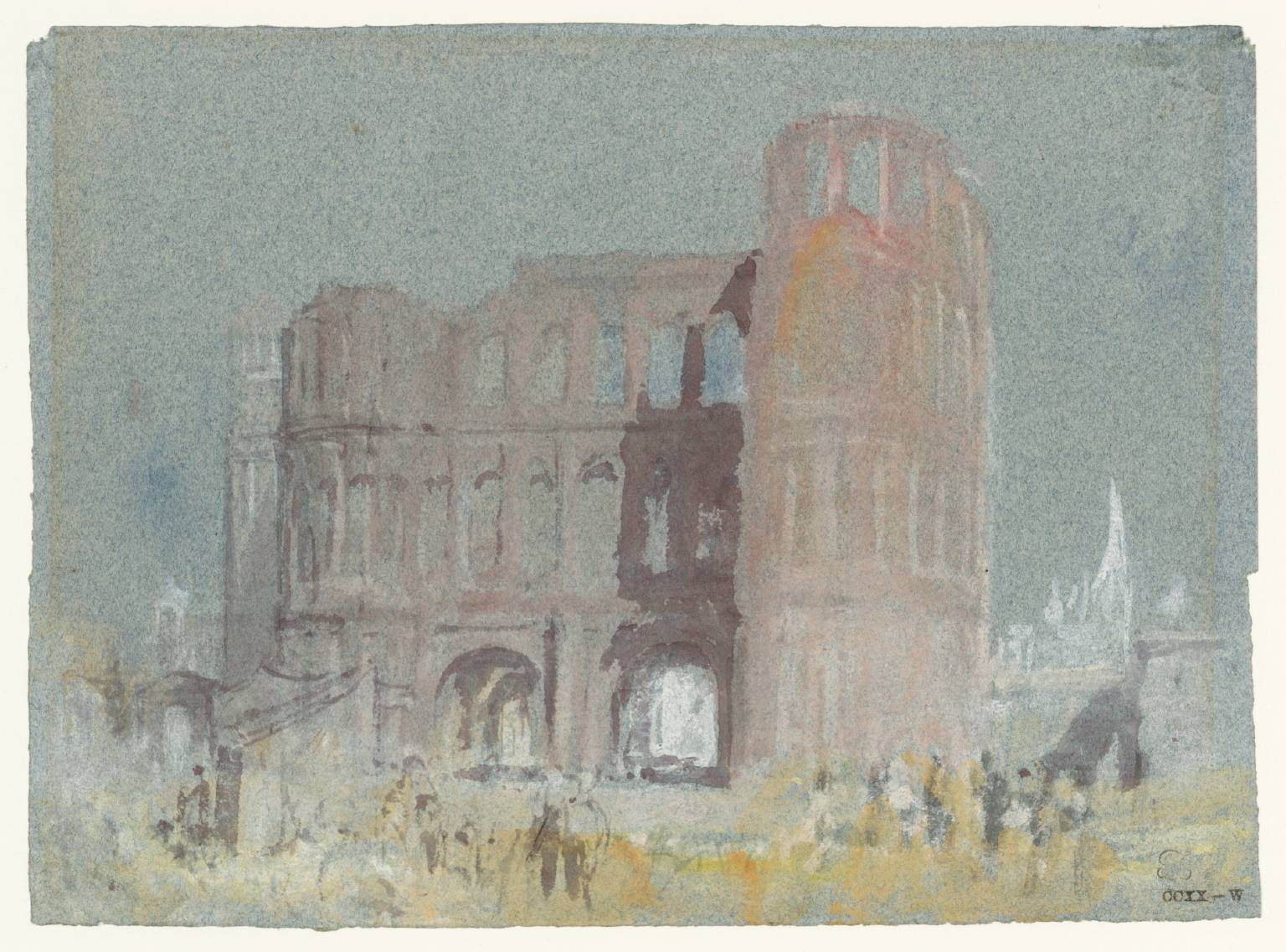
Joseph Mallord William Turner, The Porta Nigra, Trier c.1839
1/30
artworks in Experiments on Paper
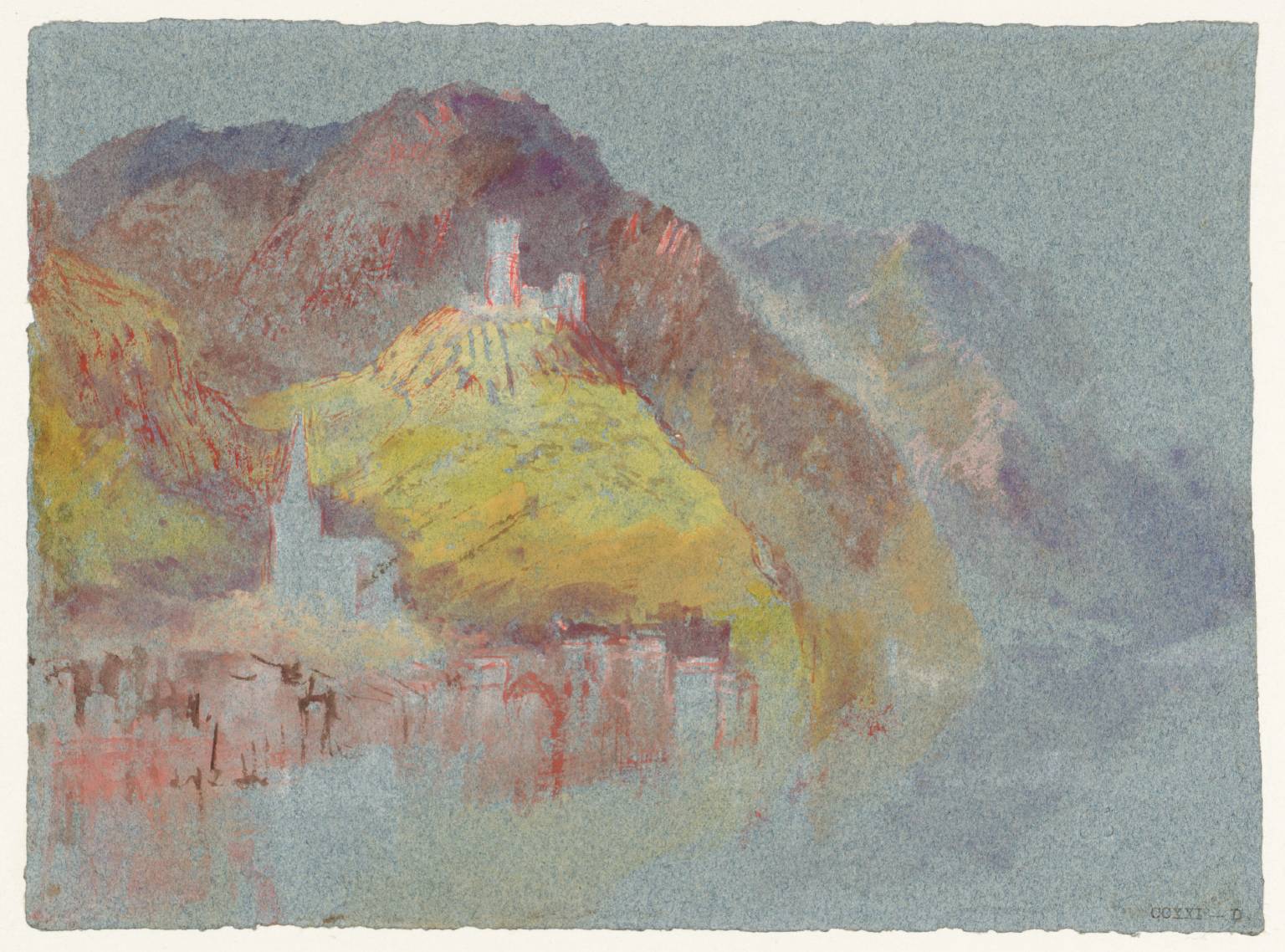
Joseph Mallord William Turner, Klotten and Burg Coraidelstein from the West c.1839
Nos.69 and 70 show two very different faces of the same town. In no.69 Klotten appears the epitome of serenity, its castle apparently situated upon a gentle slope. The most finished area is the hillside, where brilliant sunlight is powerfully represented by pure colour. In no.70, however, the castle appears precariously perched on the brink of an abyss and the ensemble takes on a far more dynamic character which is underlined by Turner's expressive handling and clashing colours.
Gallery label, August 1991
2/30
artworks in Experiments on Paper
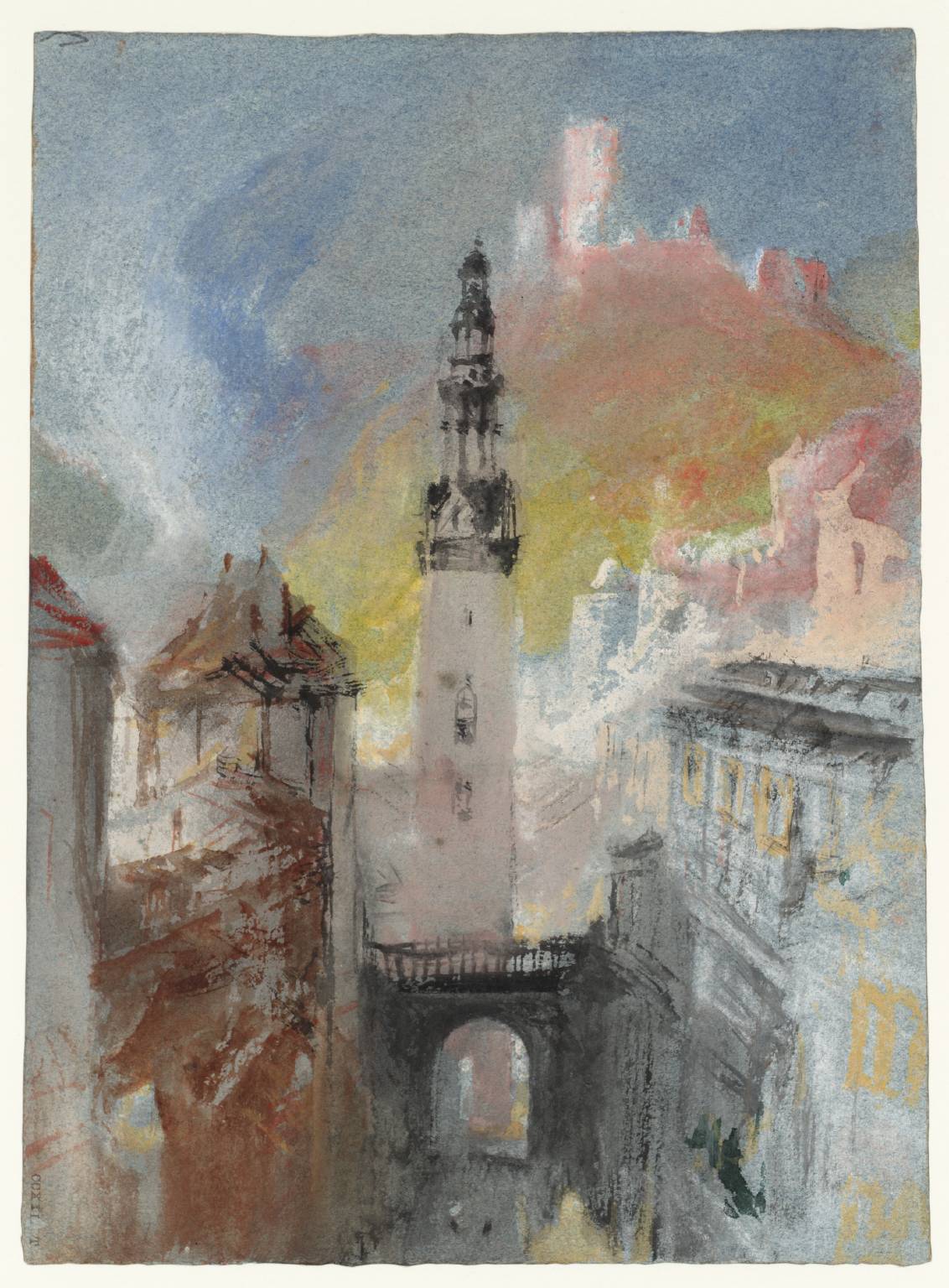
Joseph Mallord William Turner, St Martin’s Church, Cochem c.1839
3/30
artworks in Experiments on Paper
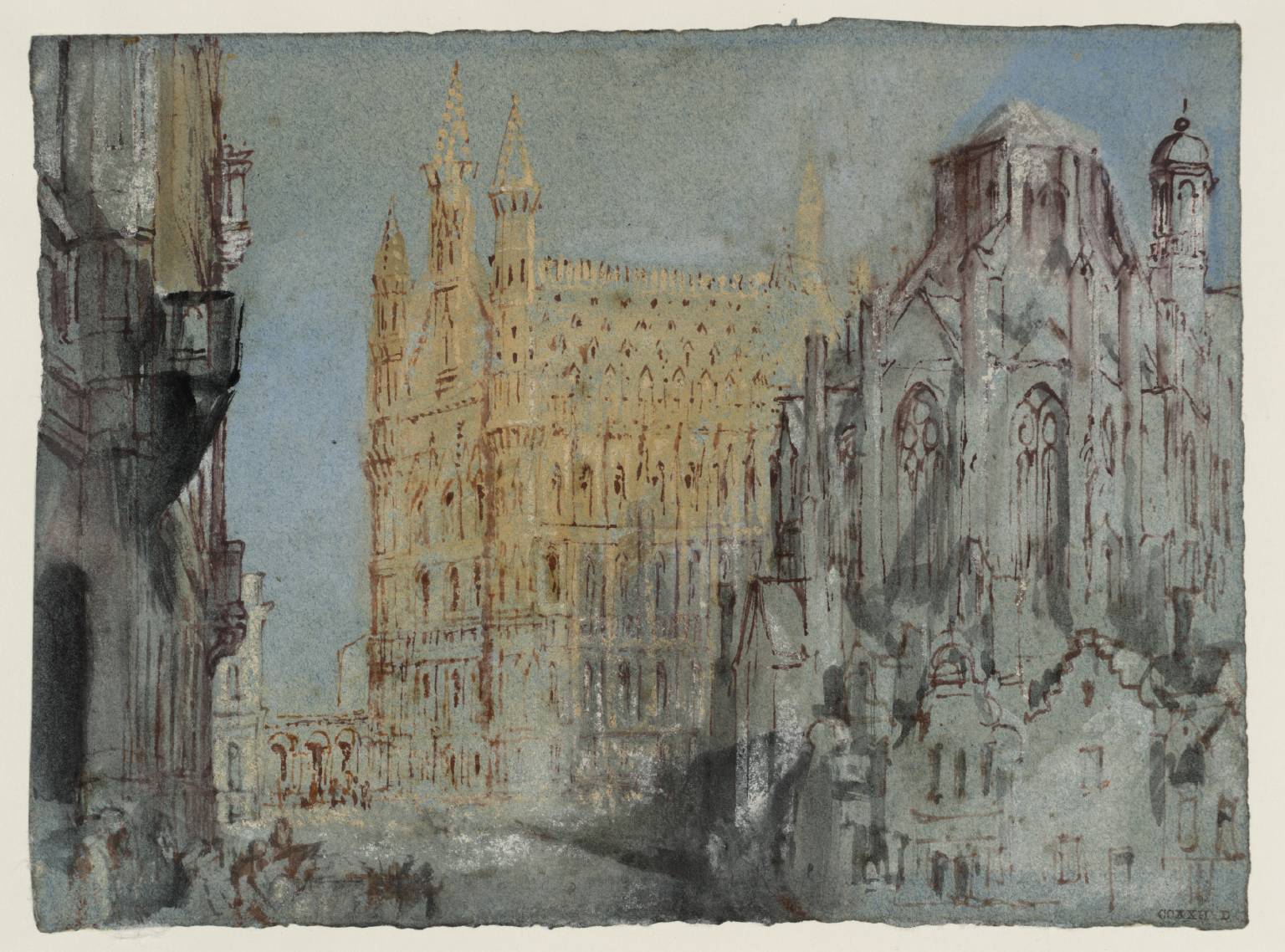
Joseph Mallord William Turner, The Town Hall, Louvain, and the Choir of St Peter’s Church c.1839
On his way to Germany in 1839, Turner passed through Brussels and Louvain, sketching as he went. This view of the
Town Hall and St. Peter's Church in Louvain shows his interest in Belgian architecture.
However, German cities and architecture played a more important part in Turner's working life. His interest began with his first visit to the Rhineland in 1817, at the age of forty-two, and continued until the publication of the large engravings of Ehrenbreitstein and Heidelberg in 1846, five years before his death.
Gallery label, August 2004
4/30
artworks in Experiments on Paper

Joseph Mallord William Turner, The Deer in Petworth Park 1827
5/30
artworks in Experiments on Paper
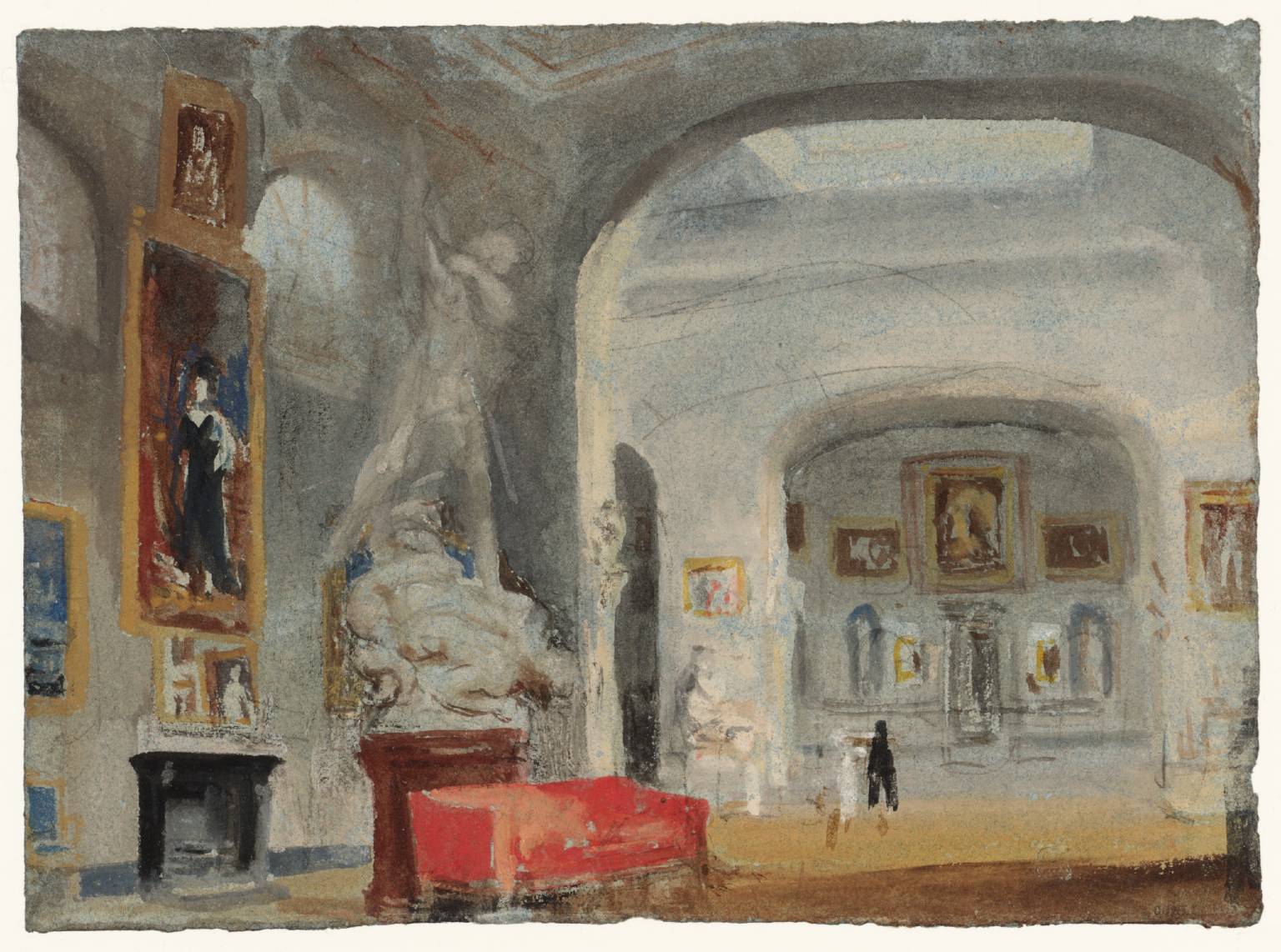
Joseph Mallord William Turner, The North Gallery from the North Bay: Owen’s Portrait of Mrs Robinson Hanging to the Left of Flaxman’s ‘St Michael Overcoming Satan’ 1827
6/30
artworks in Experiments on Paper

Joseph Mallord William Turner, Study of Pink Bed-Curtains 1827
7/30
artworks in Experiments on Paper
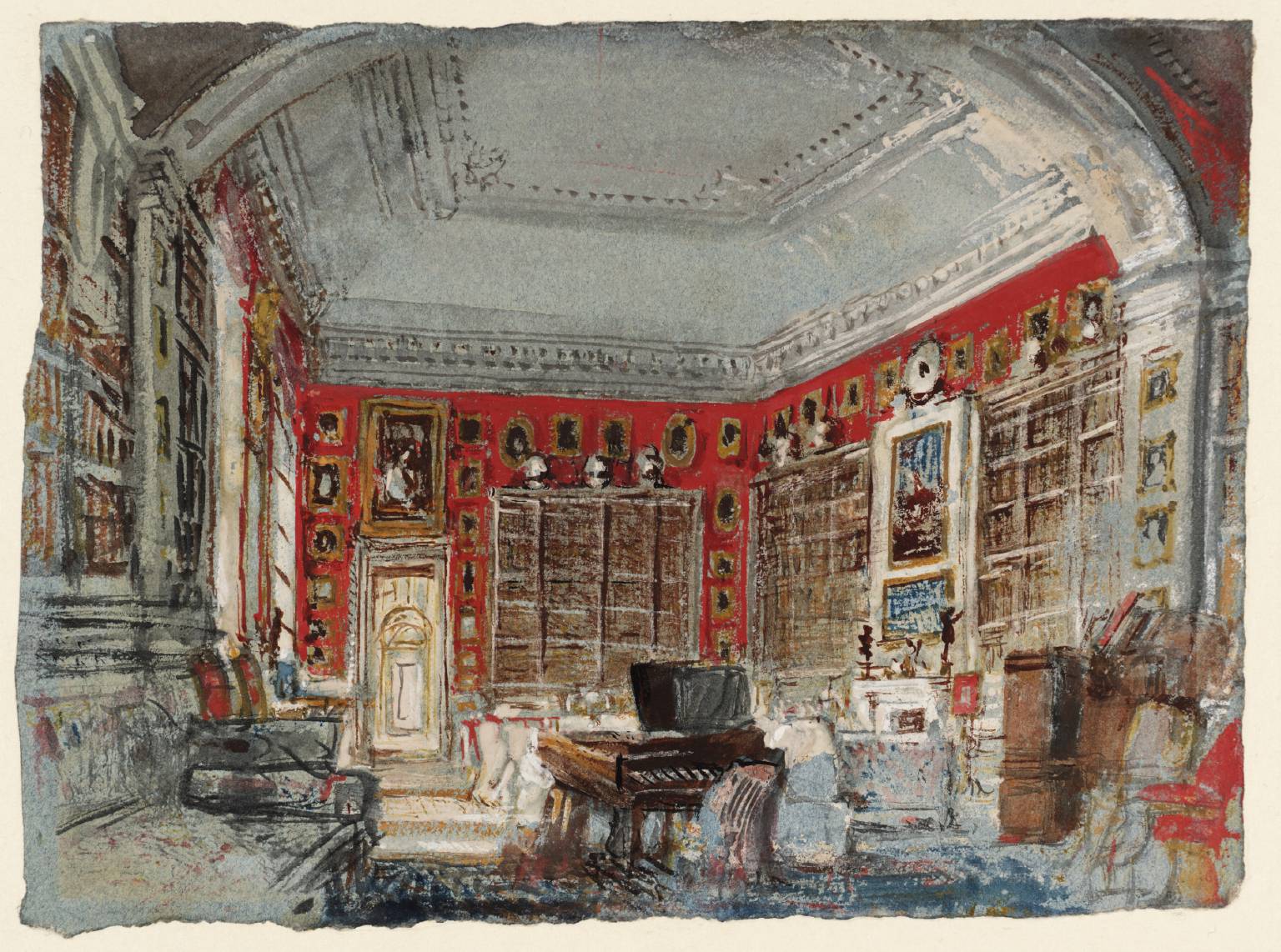
Joseph Mallord William Turner, Petworth: the White Library, looking down the Enfilade from the Alcove, 1827 1827
8/30
artworks in Experiments on Paper
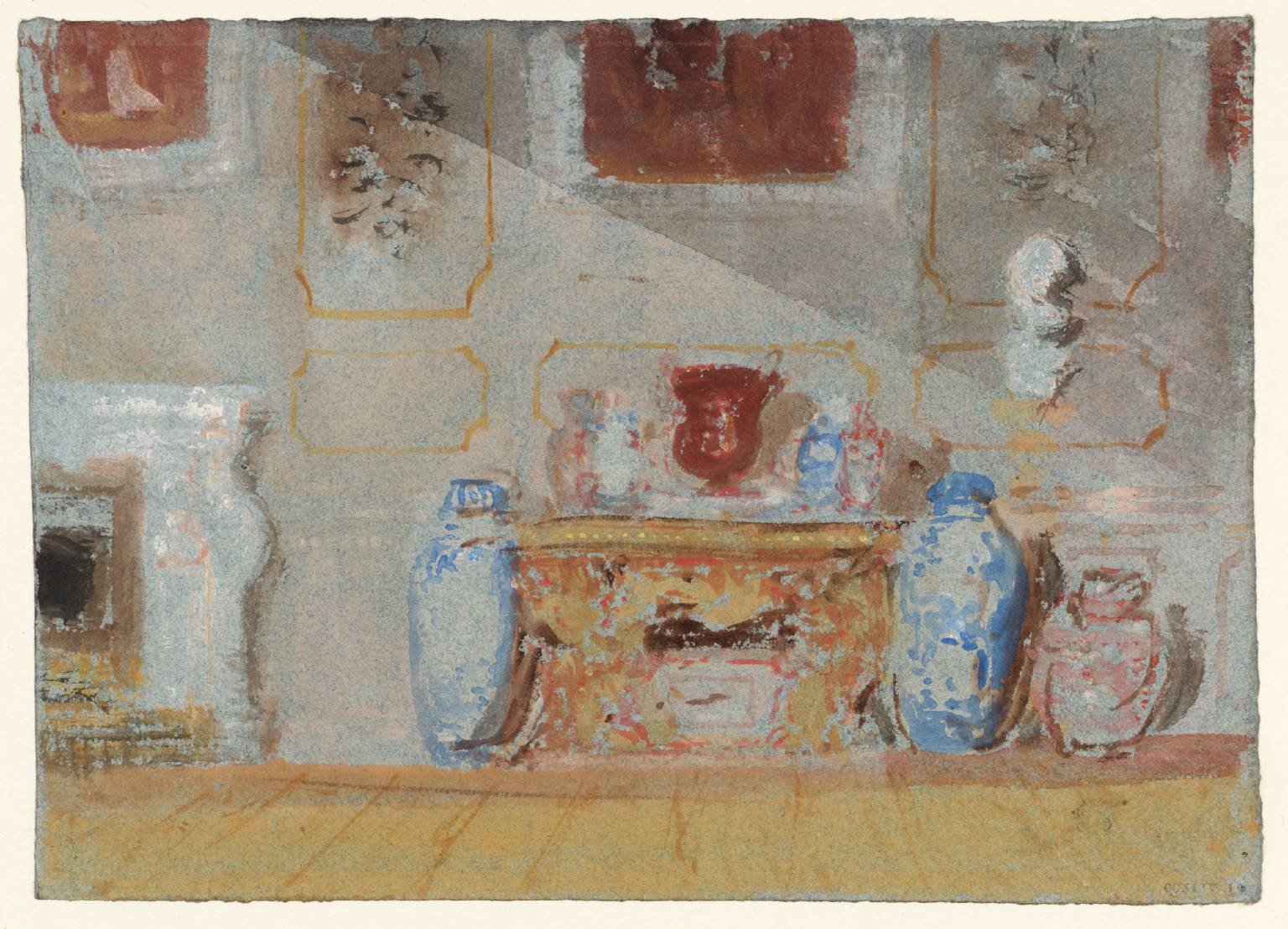
Joseph Mallord William Turner, Blue and White China Jars Flanking a Gilt Console Table: Carvings by Grinling Gibbons 1827
9/30
artworks in Experiments on Paper
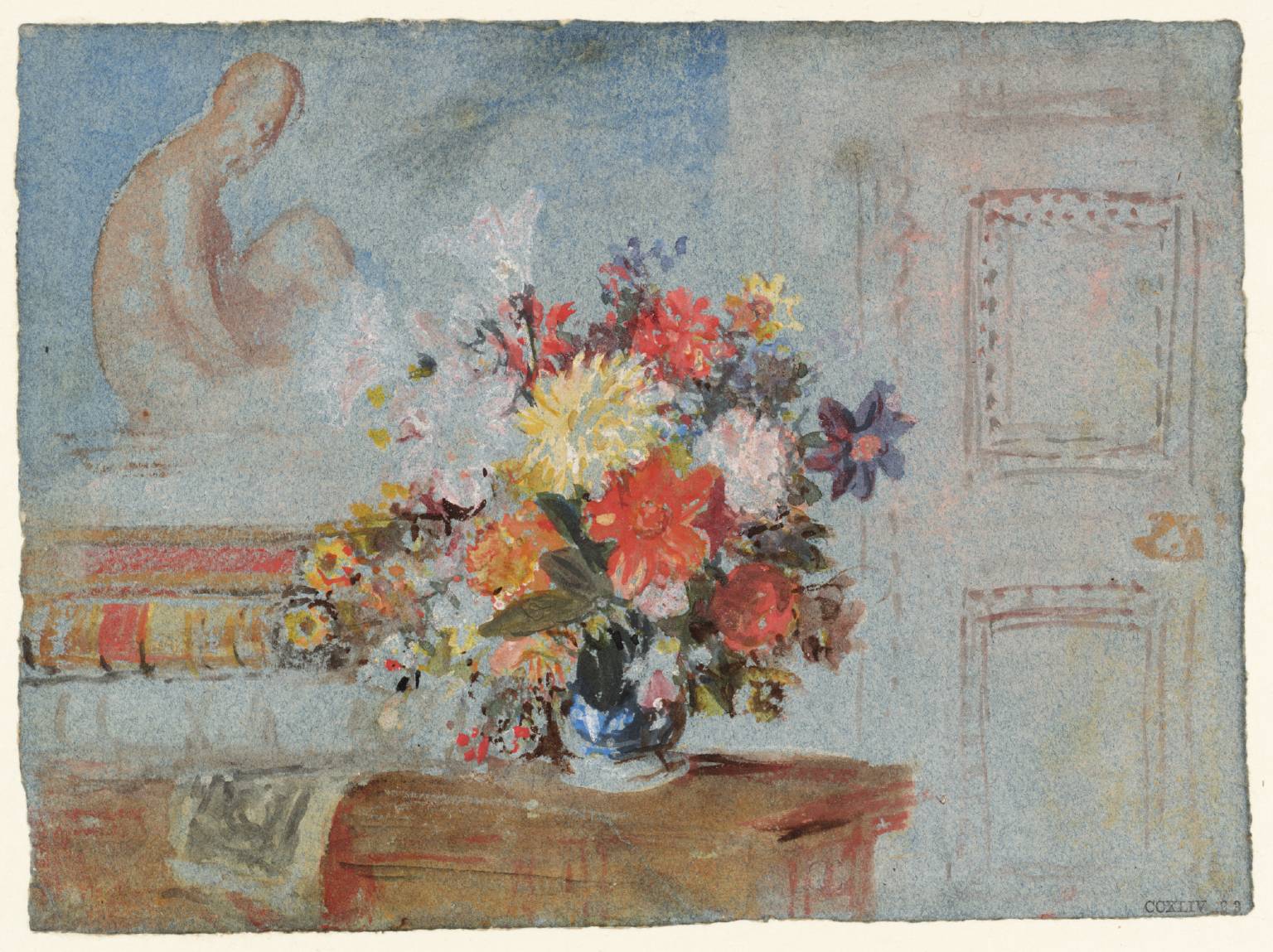
Joseph Mallord William Turner, The Old Library: A Vase of Lilies, Dahlias and Other Flowers 1827
10/30
artworks in Experiments on Paper
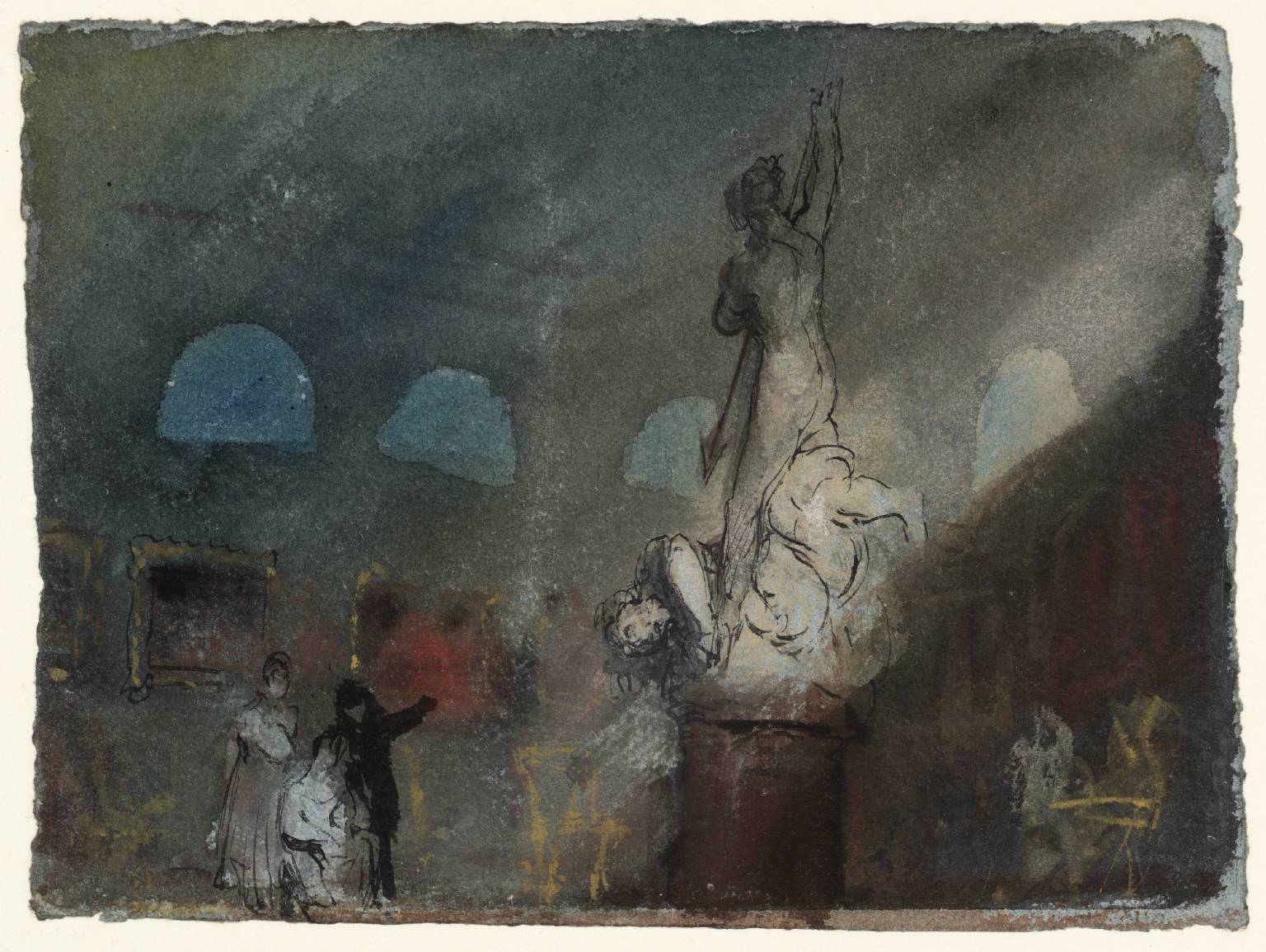
Joseph Mallord William Turner, The North Gallery at Night: Figures Contemplating Flaxman’s Statue, ‘St Michael Overcoming Satan’ 1827
11/30
artworks in Experiments on Paper
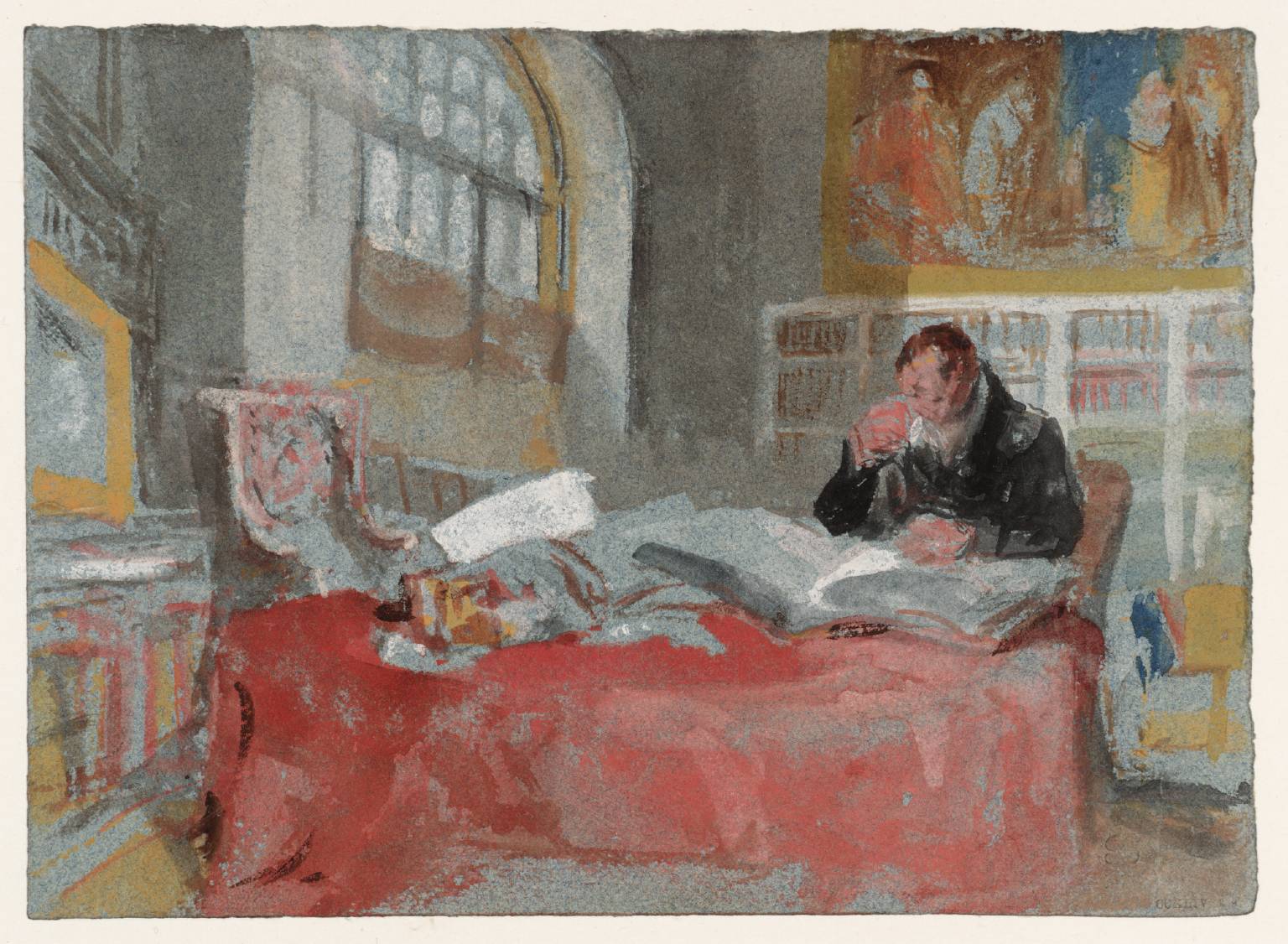
Joseph Mallord William Turner, A Man Seated at a Table in the Old Library 1827
12/30
artworks in Experiments on Paper
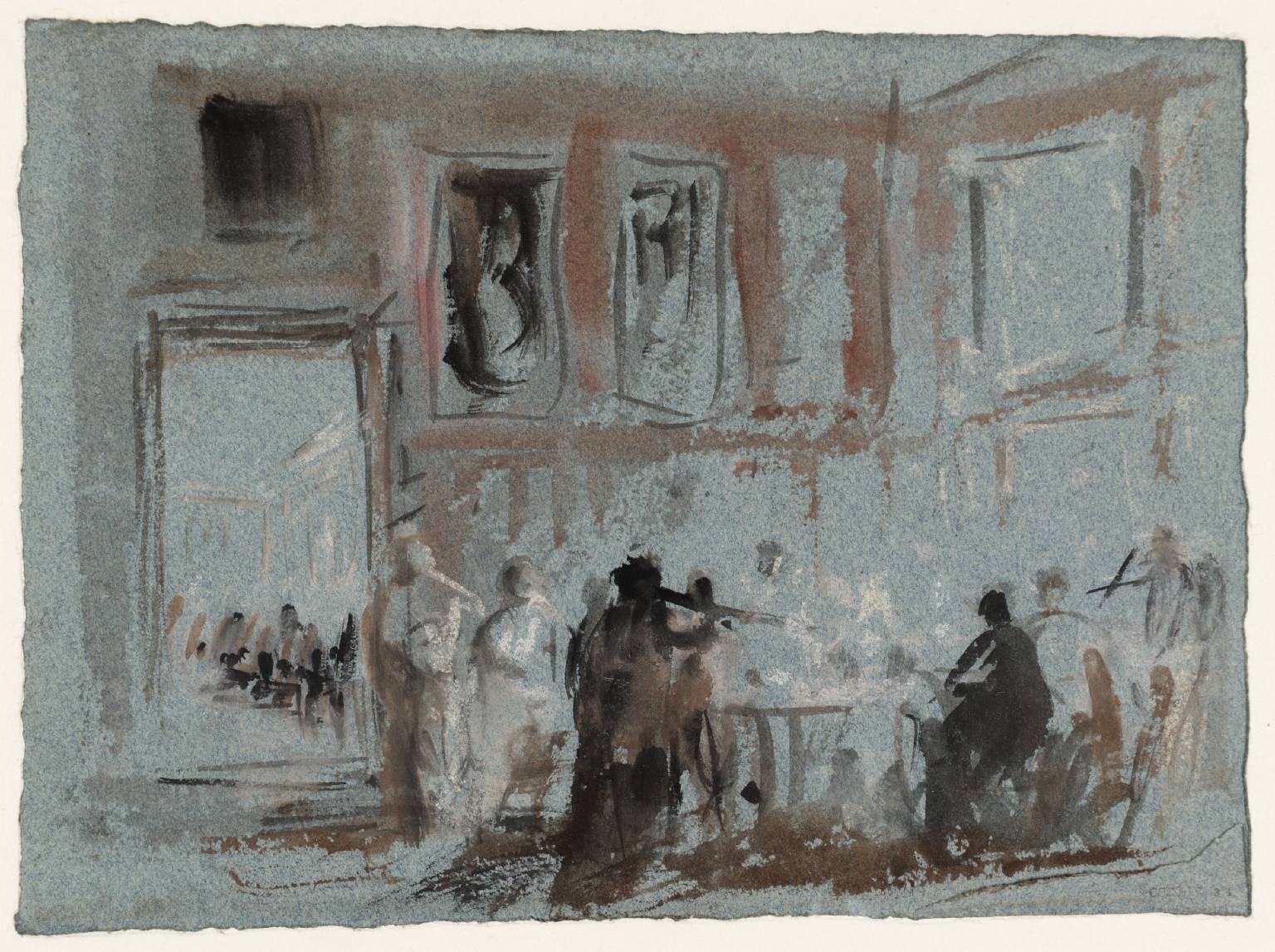
Joseph Mallord William Turner, Musicians 1827
13/30
artworks in Experiments on Paper
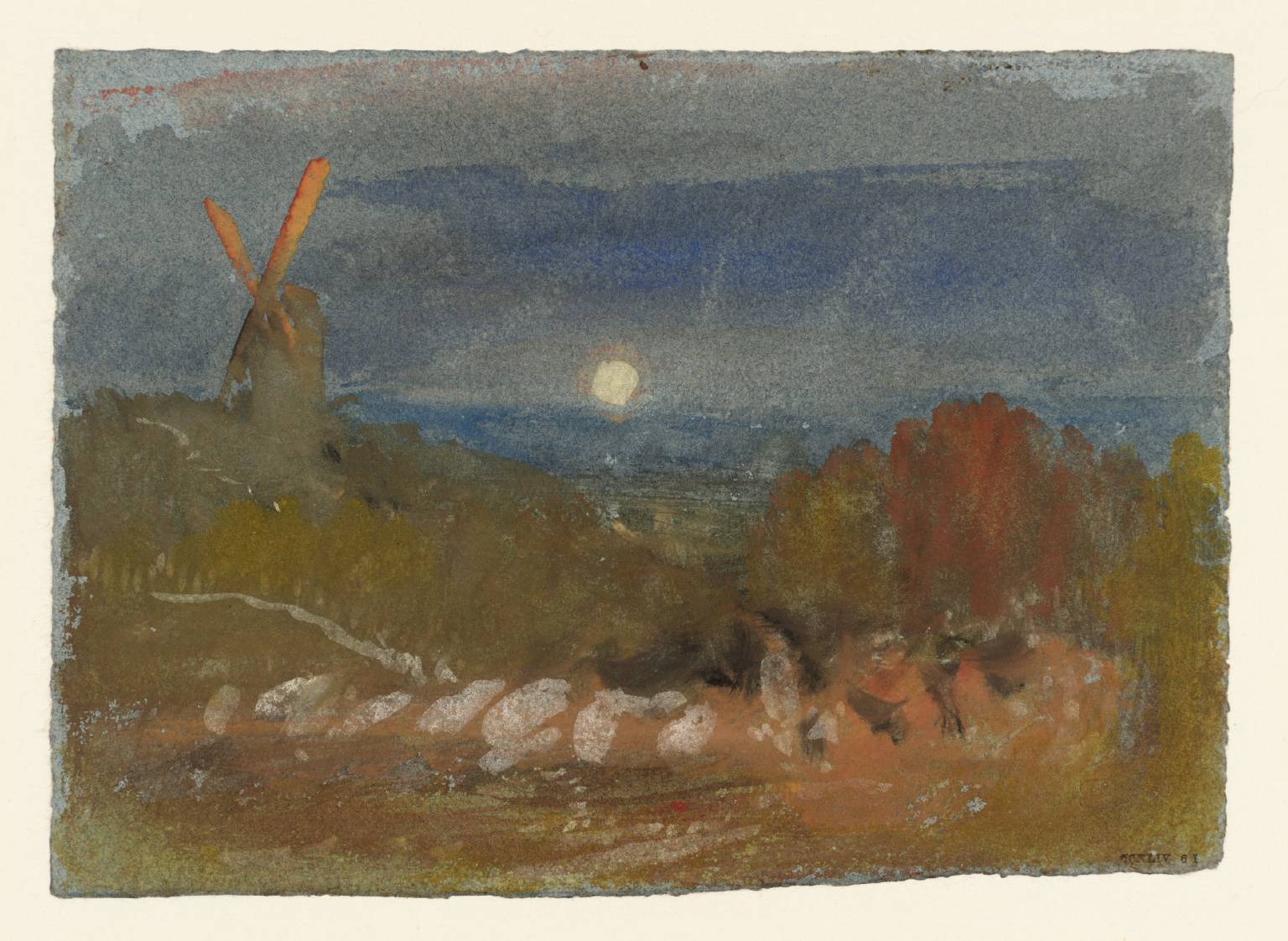
Joseph Mallord William Turner, Landscape with Windmill: Twilight 1827
14/30
artworks in Experiments on Paper
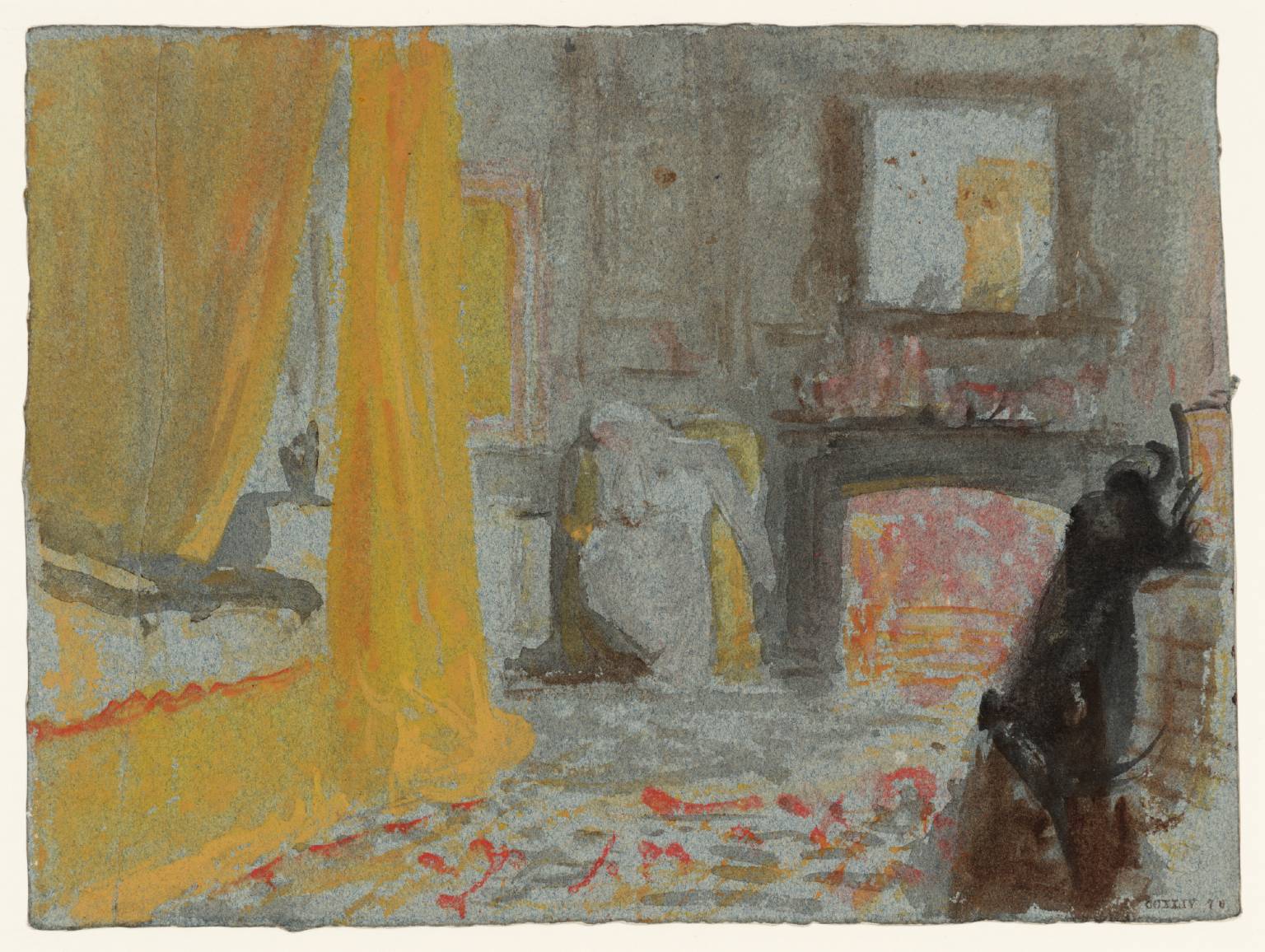
Joseph Mallord William Turner, A Bedroom with a Fire Burning, and a Bed with Yellow Curtains 1827
15/30
artworks in Experiments on Paper
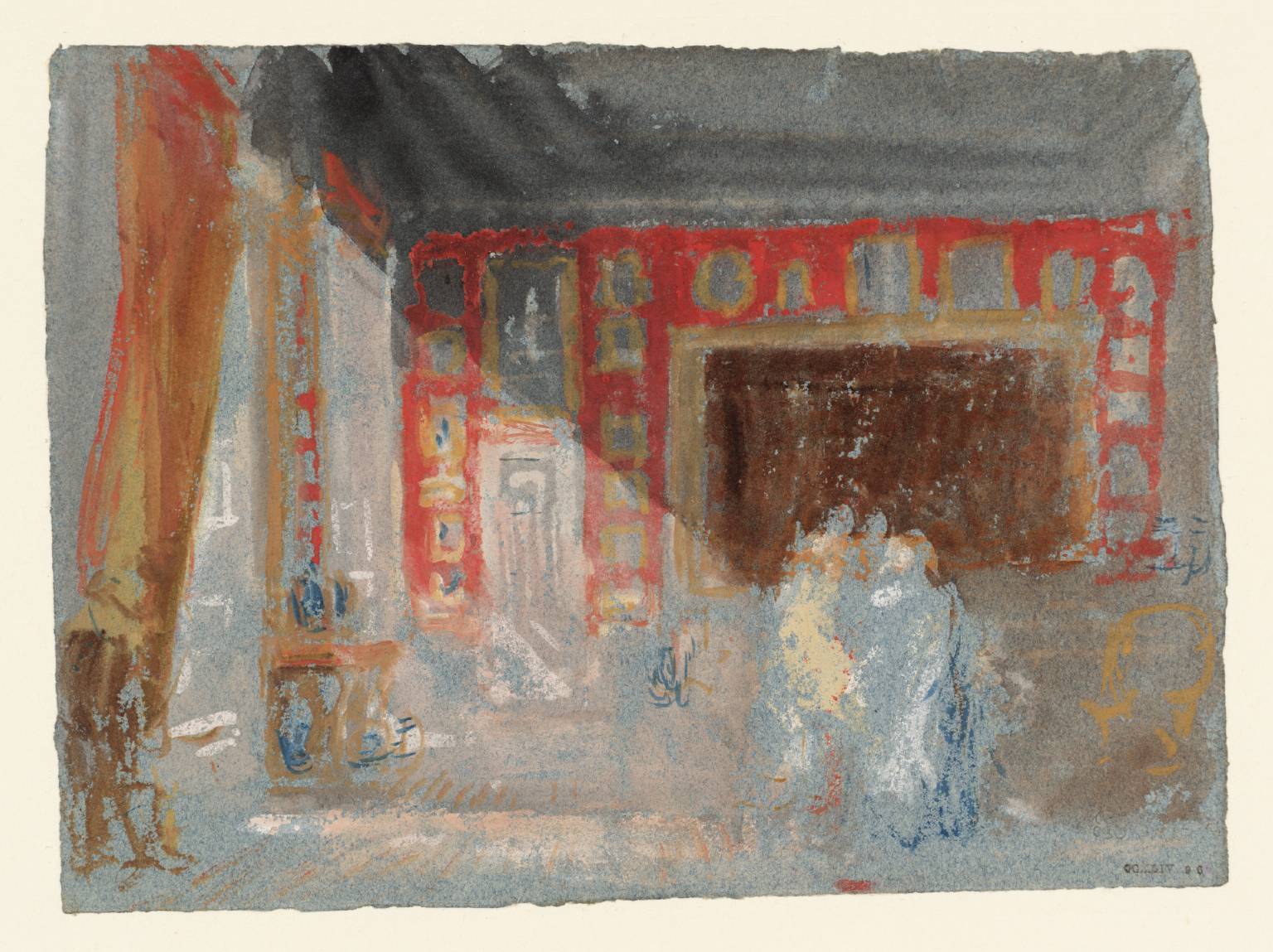
Joseph Mallord William Turner, Sunlight and Figures in the White Library 1827
16/30
artworks in Experiments on Paper
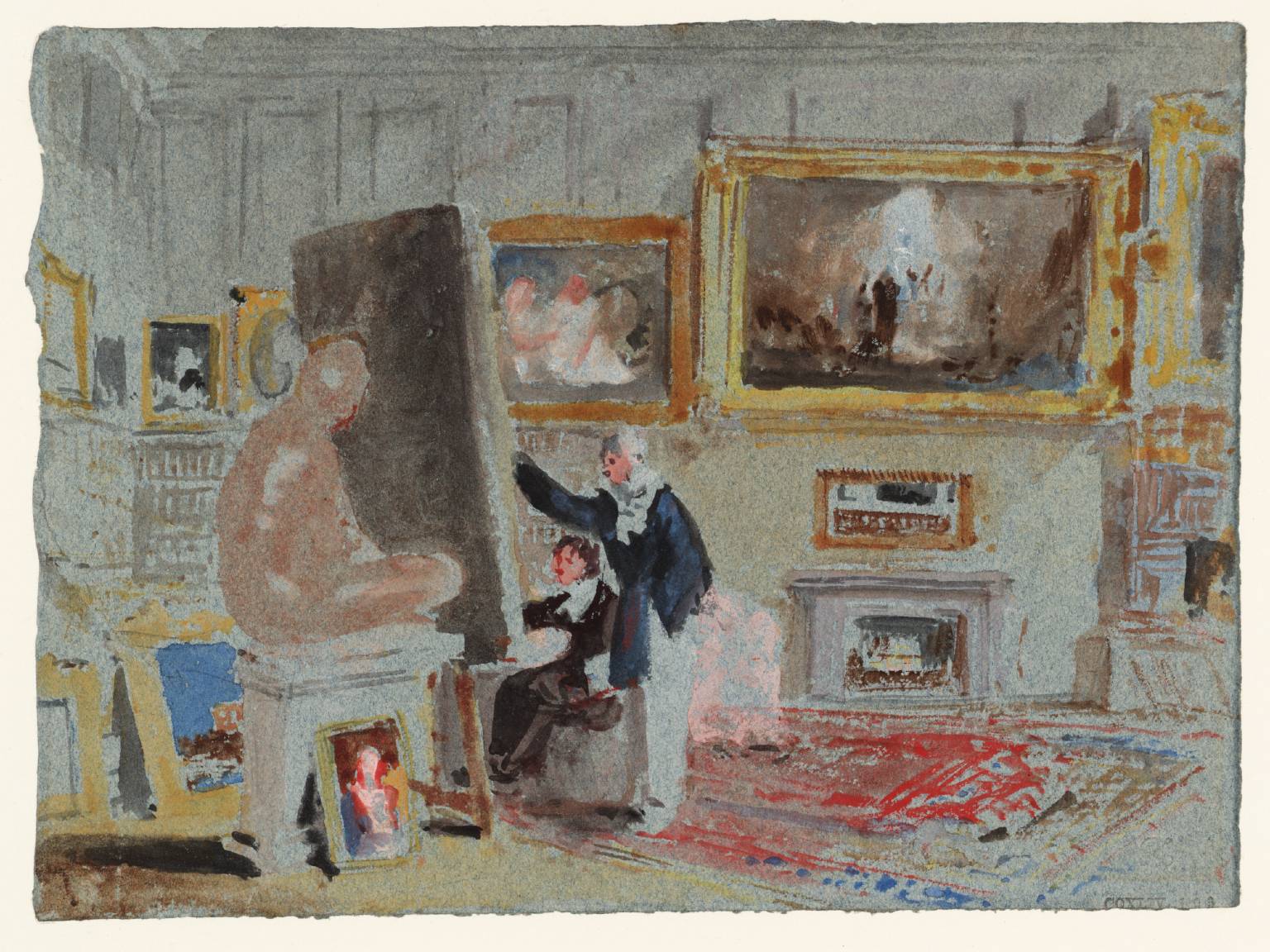
Joseph Mallord William Turner, Two Artists in the Old Library: Washington Allston’s Picture, ‘Jacob’s Dream’, Hanging over the Fireplace (‘The Artist and the Amateur’) 1827
17/30
artworks in Experiments on Paper

Joseph Mallord William Turner, La Chaire de Gargantua, near Duclair c.1832
The small town of Duclair lies towards the top end of one of the Seine's lazy meanders, and has traditionally served as a ferry crossing. Beyond it to the east is a rocky outcrop said to resemble a giant's chair, which has been linked with a popular character from French fiction. Turner's drawing of Duclair is the most sublime in the series, and is characterised by the forceful diagonals of a flash of lightening and an opposing plume of smoke; effectively pitting man against nature. The thunderstorm evoked in Turner's drawing may reflect the bad weather he encountered during his 1829 tour, but it is also possible that the rumbling of cannon shot, fired by a local eccentric to greet passing steamers, could have suggested the dramatic effect.
Gallery label, September 2004
18/30
artworks in Experiments on Paper
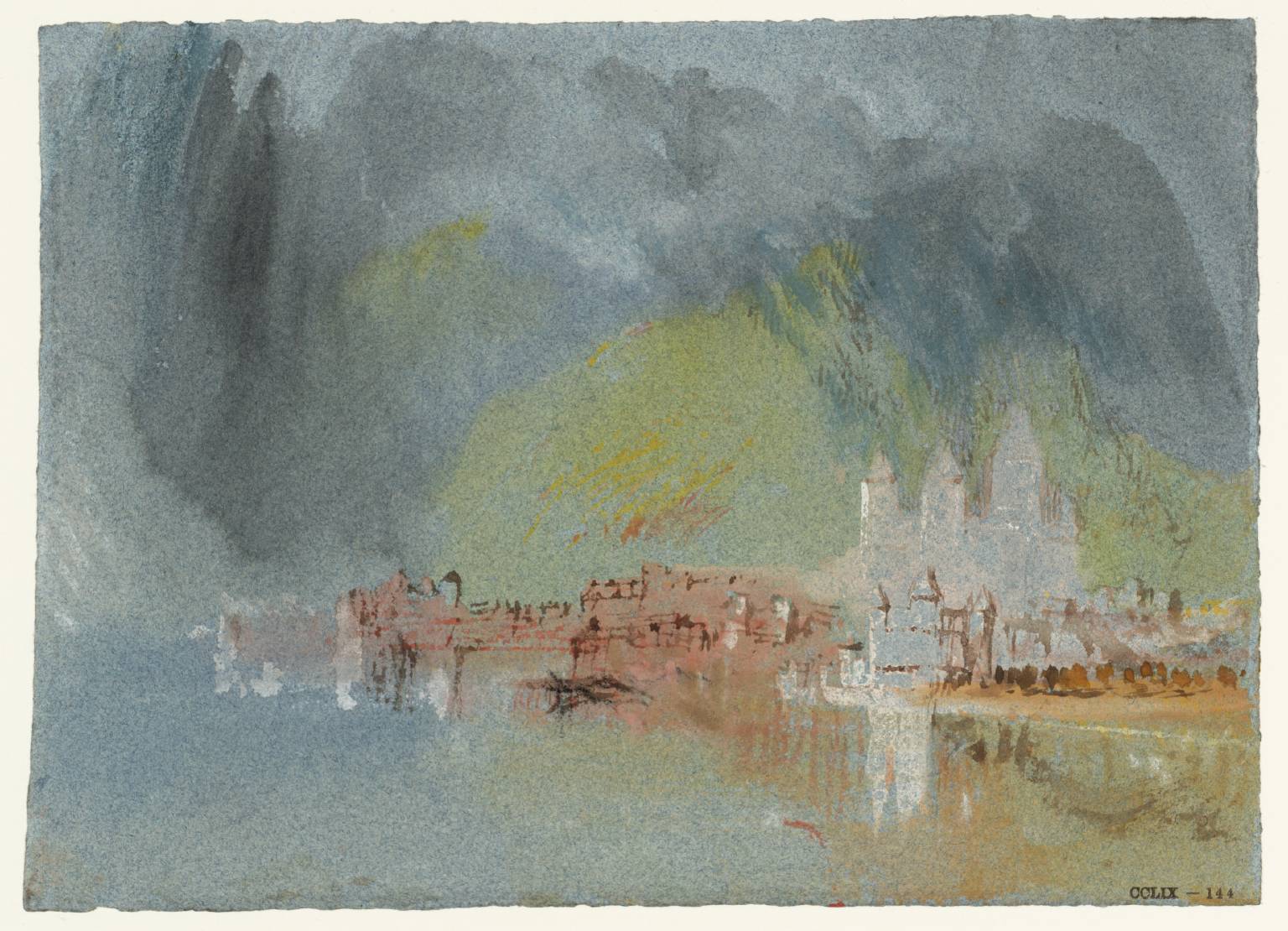
Joseph Mallord William Turner, Karden from the North c.1839
19/30
artworks in Experiments on Paper
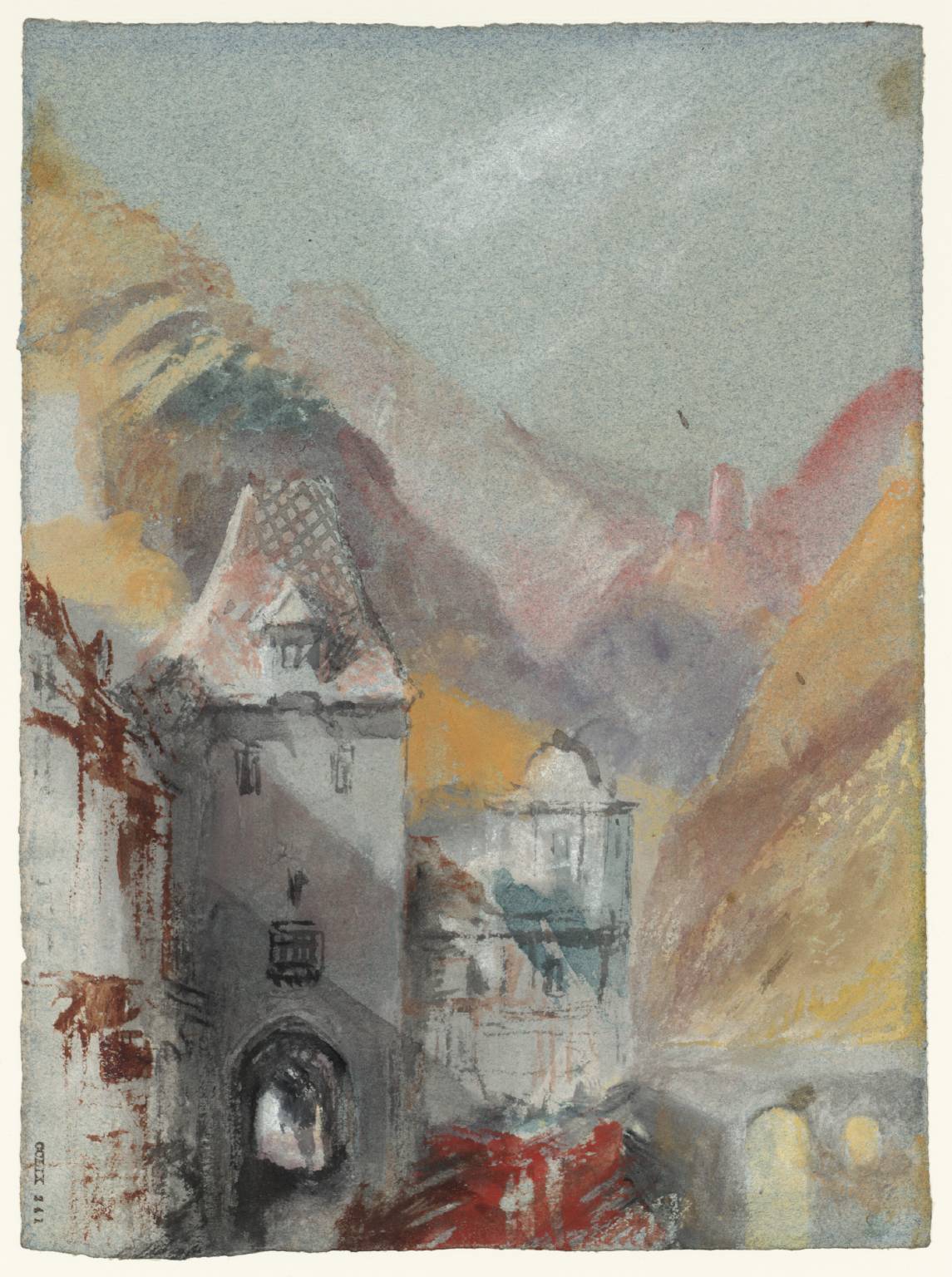
Joseph Mallord William Turner, The Enderttor and Alte Thorschenke, Cochem c.1839
One of a group of gouache studies of the medieval town of Cochem on the Mosel, made in 1839.
Gallery label, August 2004
20/30
artworks in Experiments on Paper
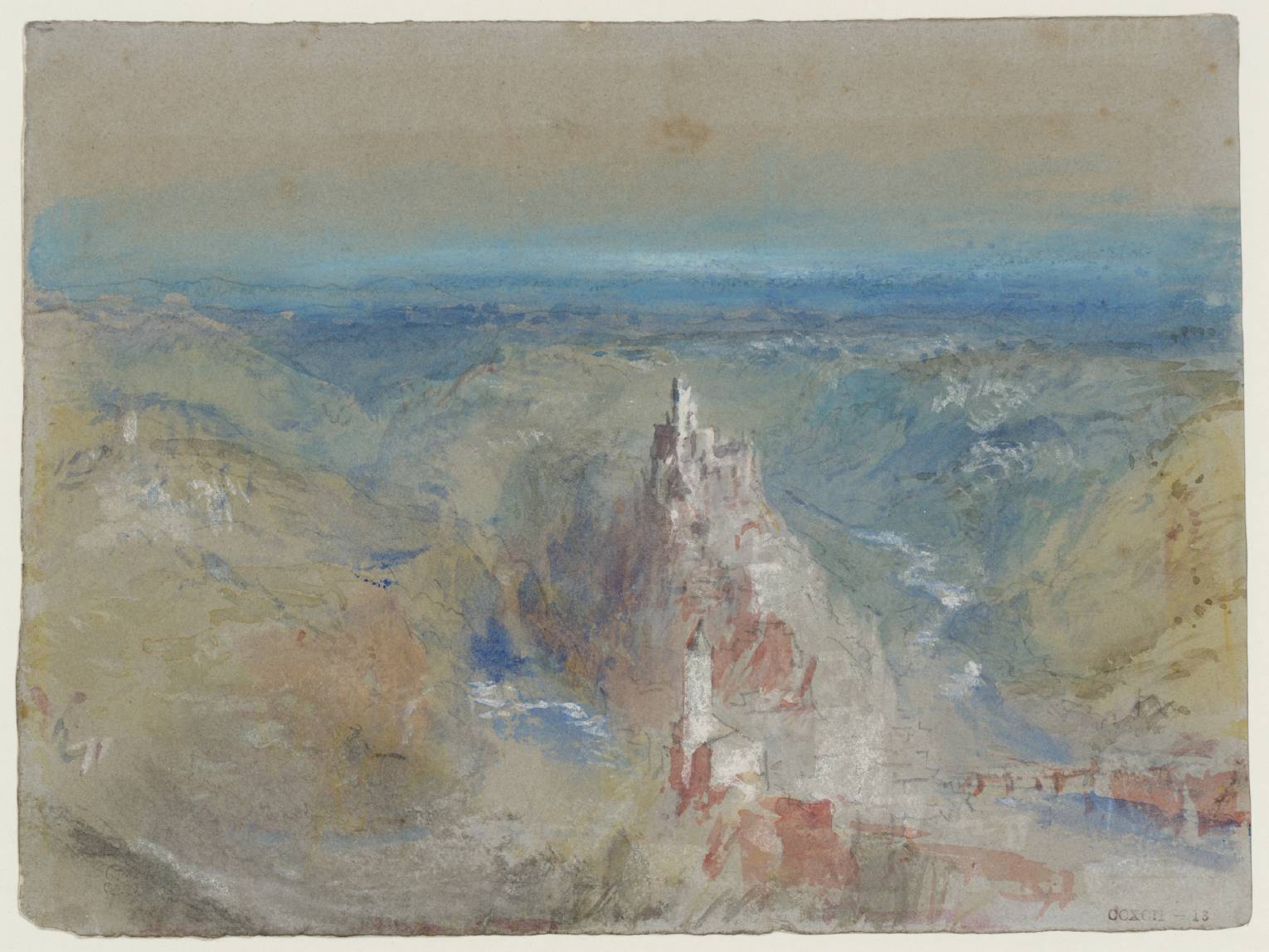
Joseph Mallord William Turner, Hals and Burg Hals above the River Ilz, from the South 1840
21/30
artworks in Experiments on Paper
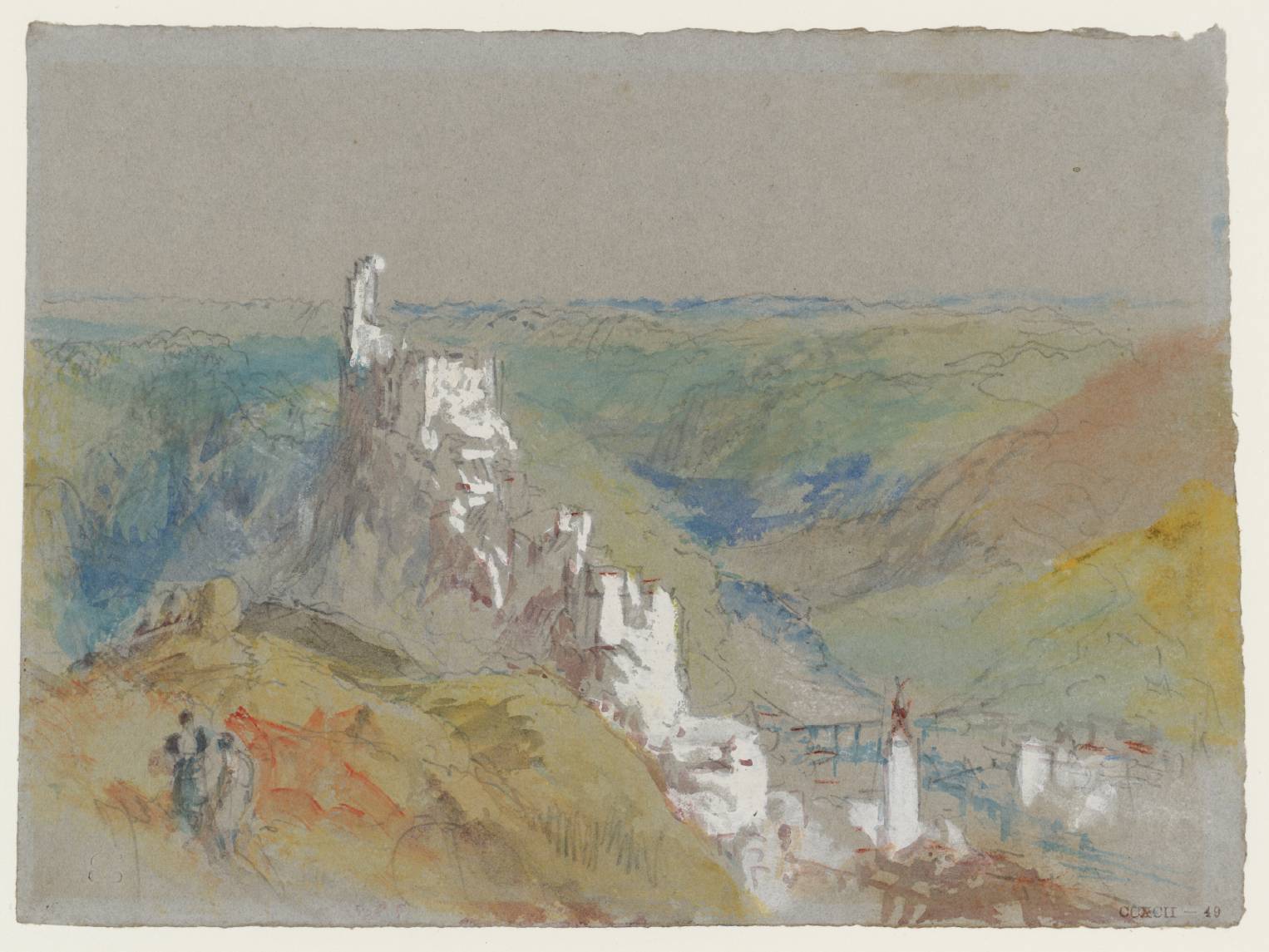
Joseph Mallord William Turner, Hals and Burg Hals above the River Ilz, from the South-West 1840
22/30
artworks in Experiments on Paper
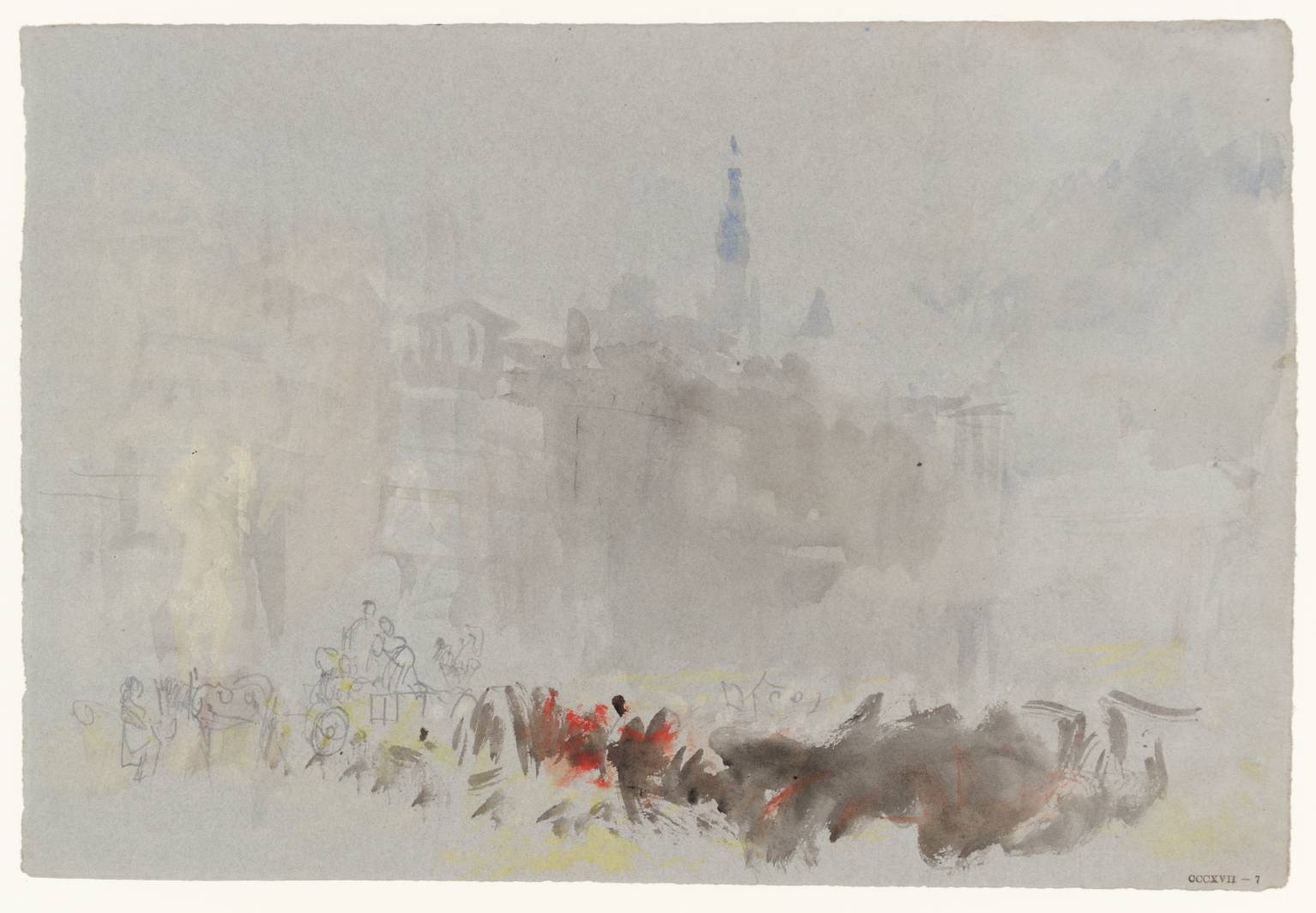
Joseph Mallord William Turner, The Spitalgasse, Coburg, from the Weisser Schwan Hotel 1840
23/30
artworks in Experiments on Paper
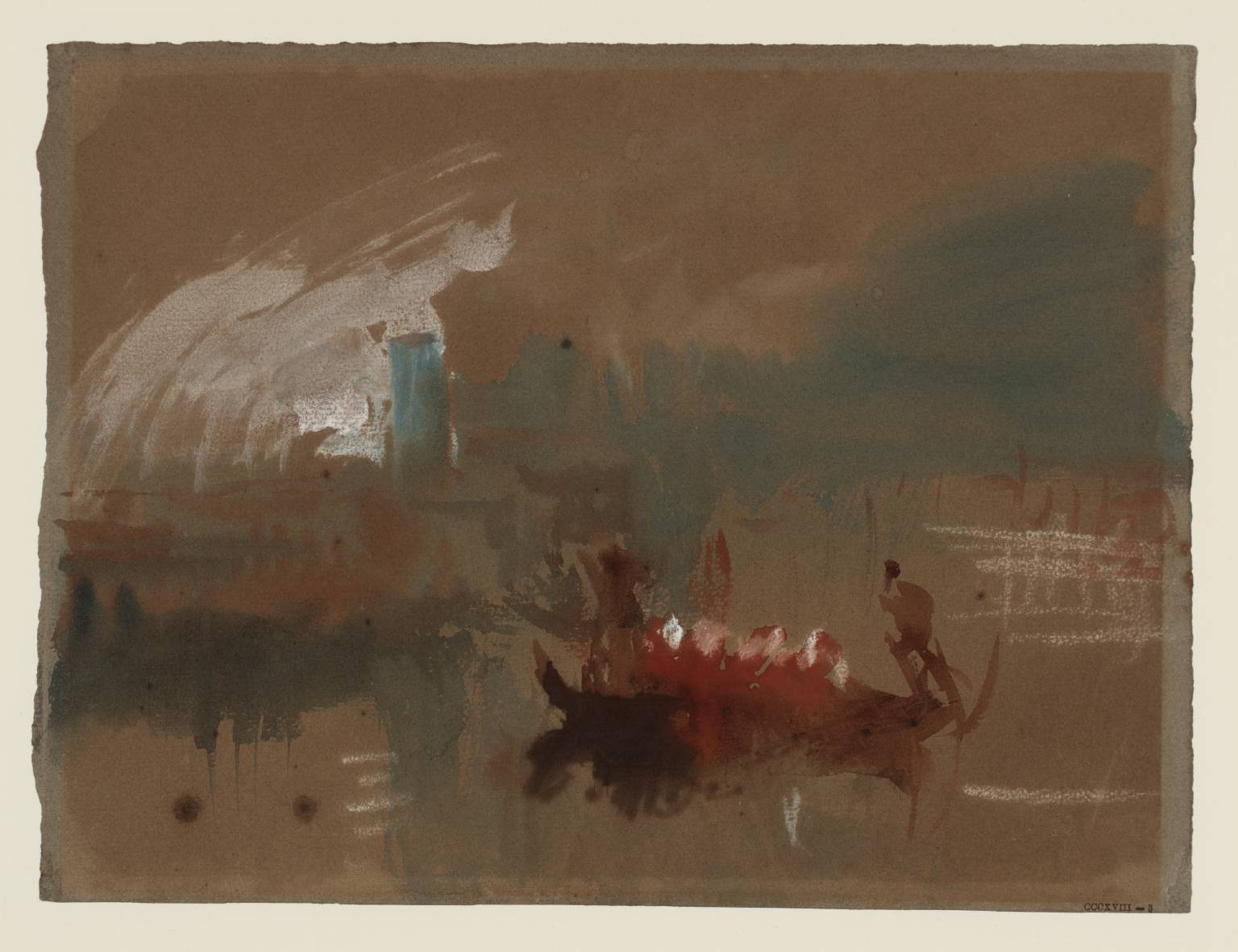
Joseph Mallord William Turner, Venice by Moonlight, with a Gondola 1840
24/30
artworks in Experiments on Paper
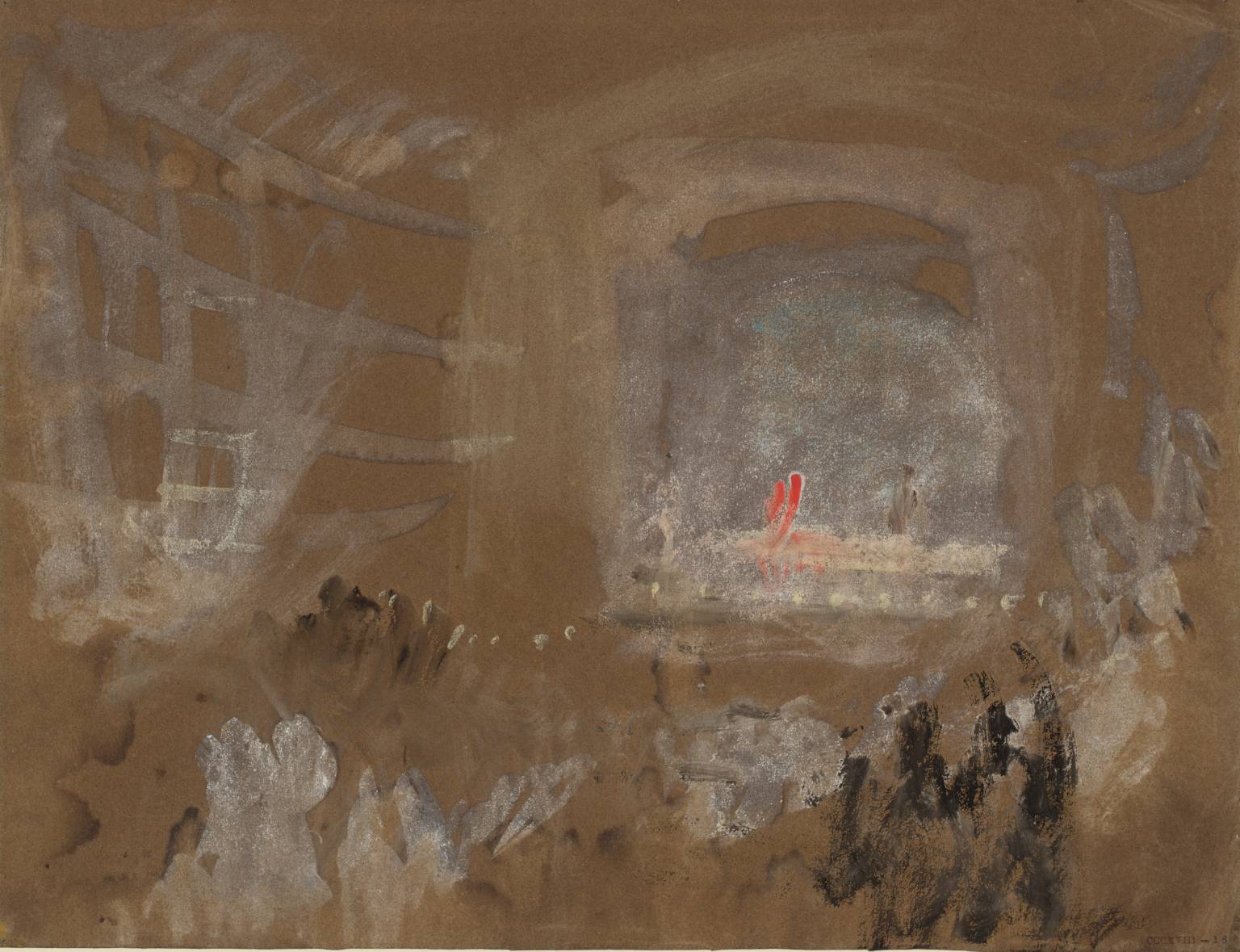
Joseph Mallord William Turner, The Interior of a Theatre, Venice 1840
25/30
artworks in Experiments on Paper
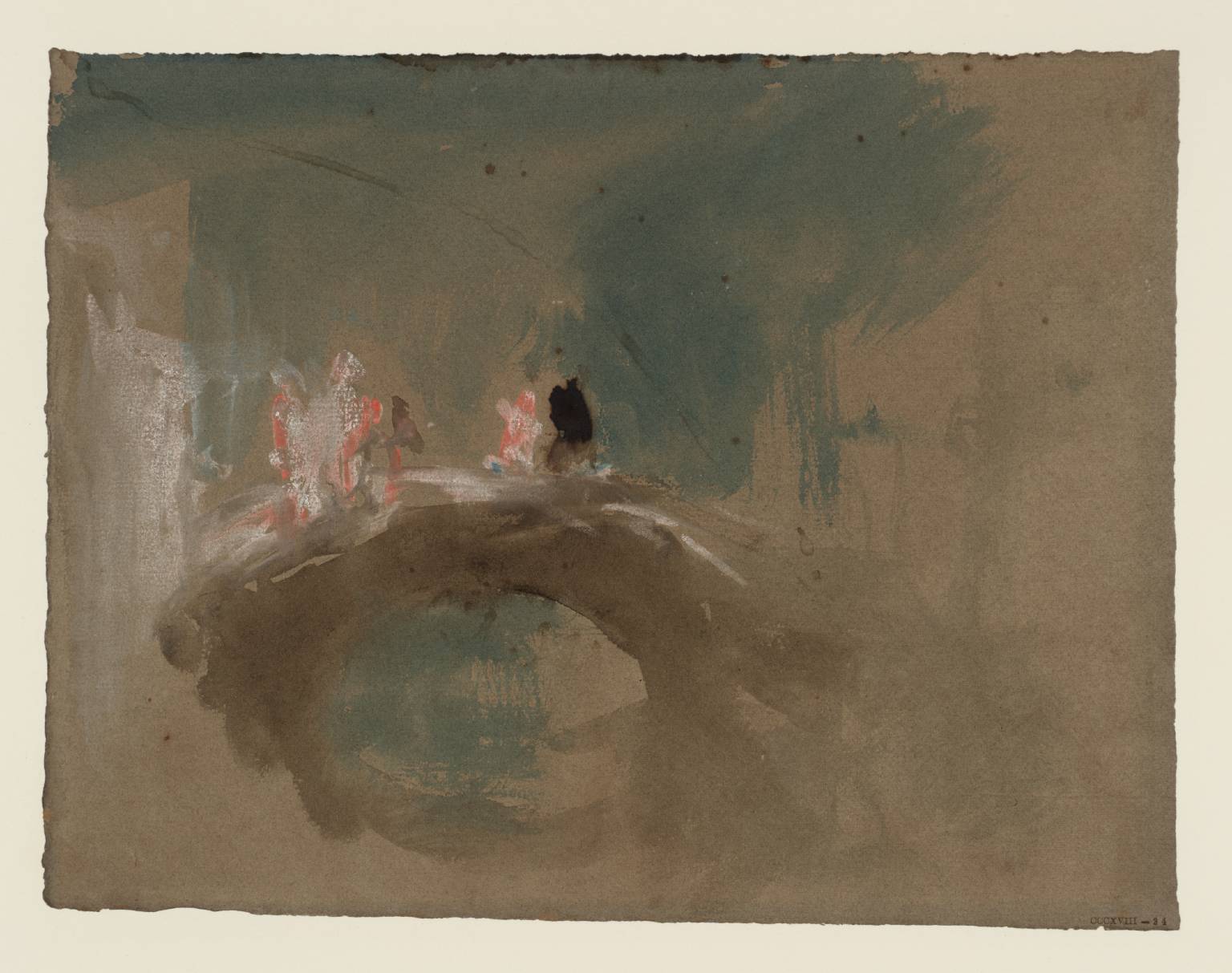
Joseph Mallord William Turner, Figures on a Bridge, Venice, at Night 1840
The sheer number of different papers that Turner actually used differentiates him from many other artists. He acquired new papers on every journey on his constant travels throughout Britain and the Continent, either as whole sheets or as pages from sketchbooks.
It is highly likely that this paper came from one of the mills near Venice. Several of the ‘brown’ papers that Turner worked on in Venice are actually different tones of grey, mostly of Italian manufacture. Some have been badly affected by light damage, turning them from grey to various tones of dark brown.
Gallery label, September 2004
26/30
artworks in Experiments on Paper
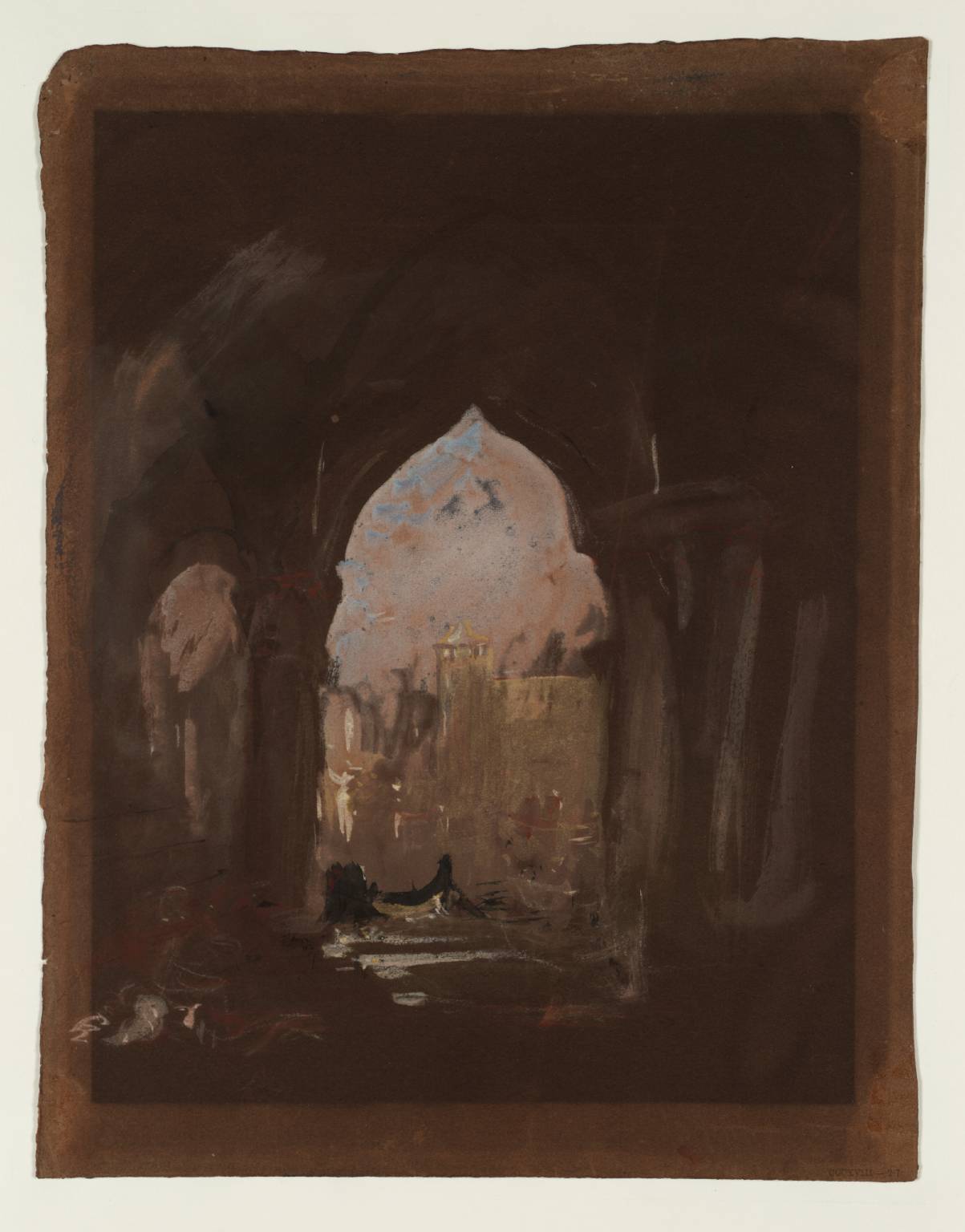
Joseph Mallord William Turner, A Moonlit Canal through a Gothic Arcade, Venice 1840
In this work Turner uses rapid touches of bodycolour to create reflections in the dark water of the canal. Several drawings in this series on brown paper make dramatic use of arches to frame buildings. Here the arch has been used as a silhouette against the moonlit sky.
This work has been exposed to light for long periods of time, causing the paper to change colour. The original colour can be seen at the edges of the sheet, which have been protected from the light.
Gallery label, September 2004
27/30
artworks in Experiments on Paper
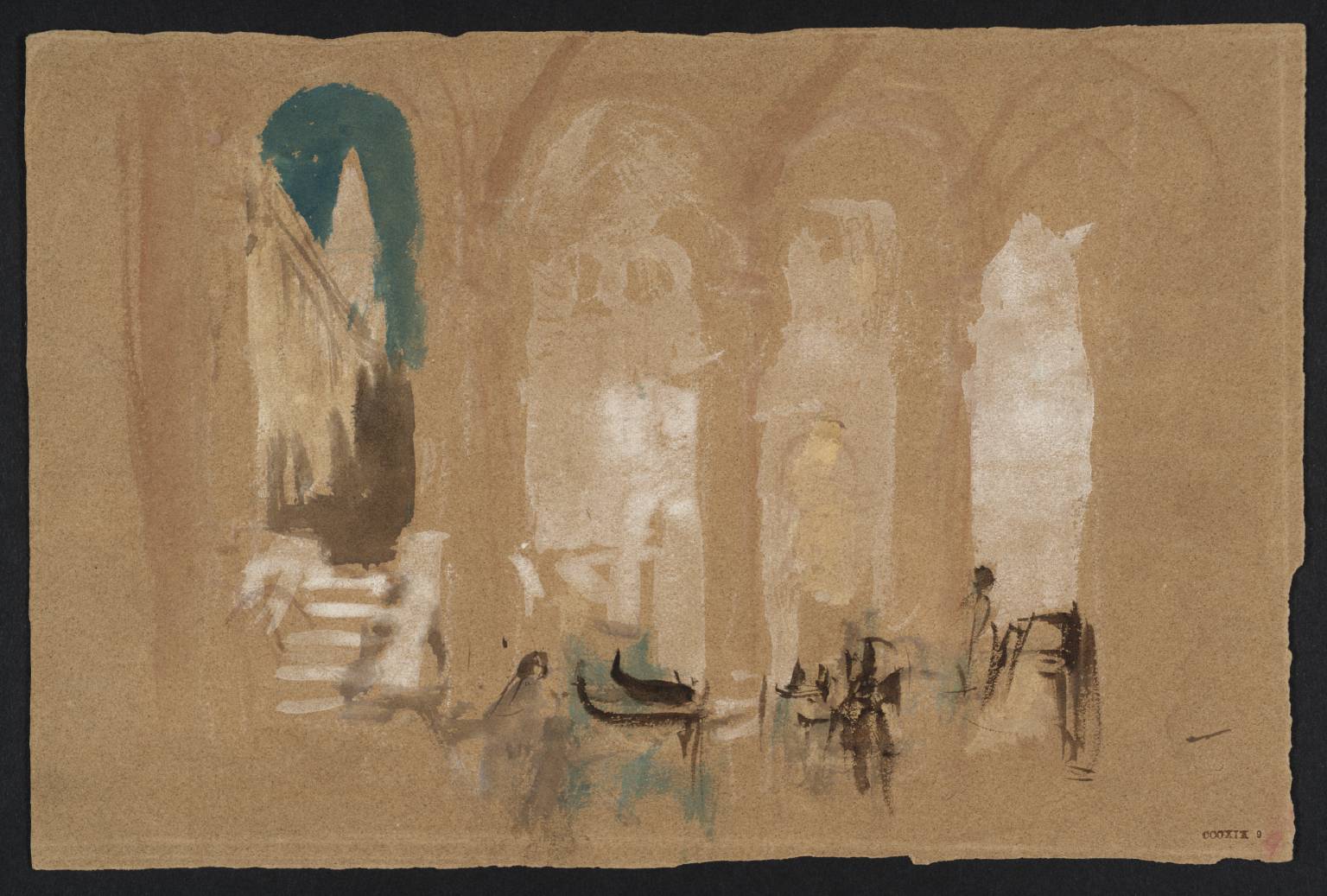
Joseph Mallord William Turner, The Spire of a Campanile, Perhaps San Marco (St Mark’s), Venice, through a Waterfront Arcade with Gondolas 1840
28/30
artworks in Experiments on Paper

Joseph Mallord William Turner, On the Mosel 1839
It is possible that the colour studies from this group of works represent a rare example of Turner colouring in the open air. Unlike his views of the Meuse and Mosel on blue paper, which were painted later from pencil sketches, this group of studies on dark blue paper were made in the course of the tour. Turner may have sat in a small boat in mid-river, so that he could sketch at ease, without any interruptions from onlookers.
Gallery label, September 2004
29/30
artworks in Experiments on Paper
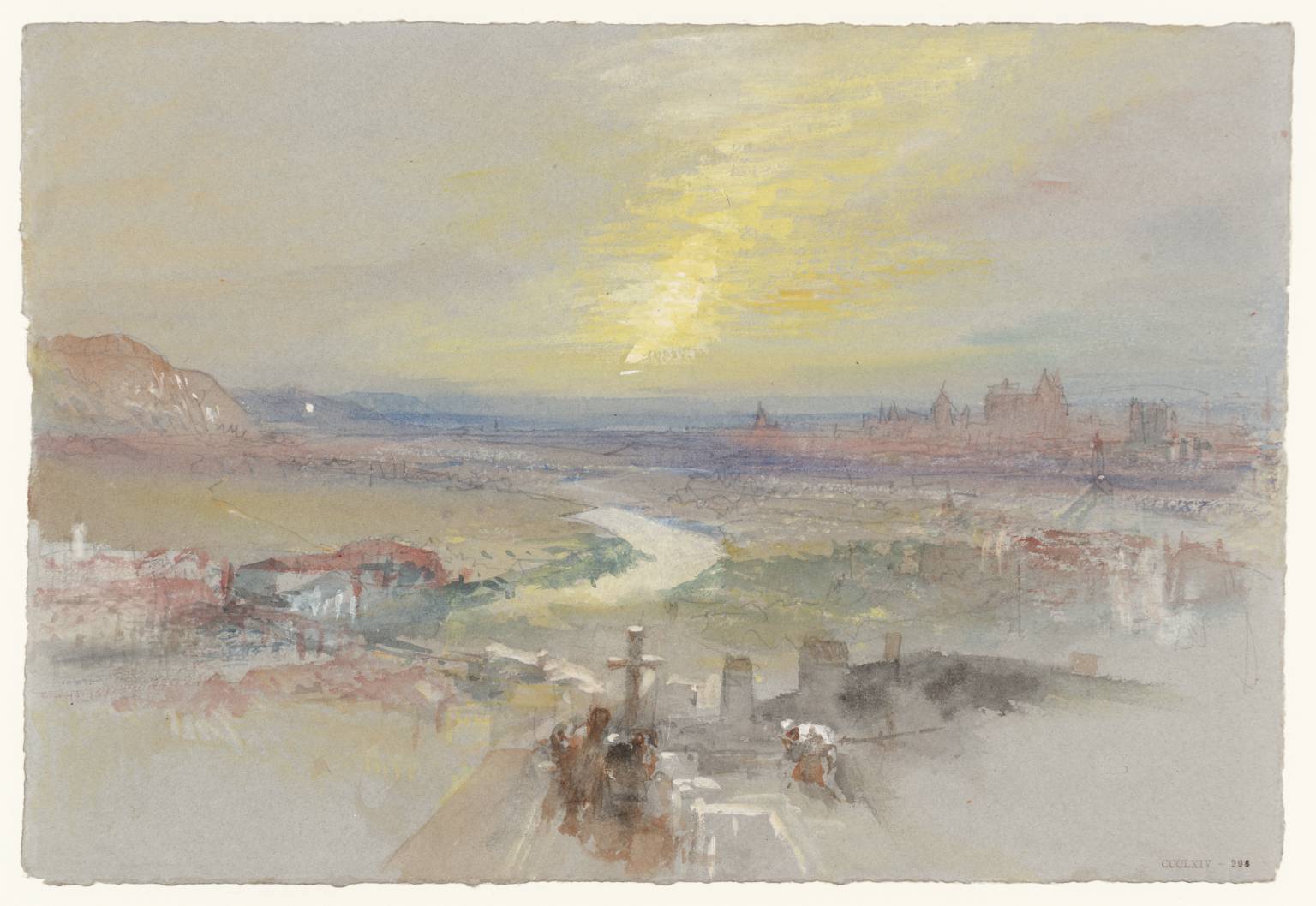
Joseph Mallord William Turner, Regensburg from the Dreifaltigkeitsberg above the Confluence of the Rivers Regen and Danube, with the Walhalla in the Distance 1840
30/30
artworks in Experiments on Paper
Art in this room






























You've viewed 6/30 artworks
You've viewed 30/30 artworks
